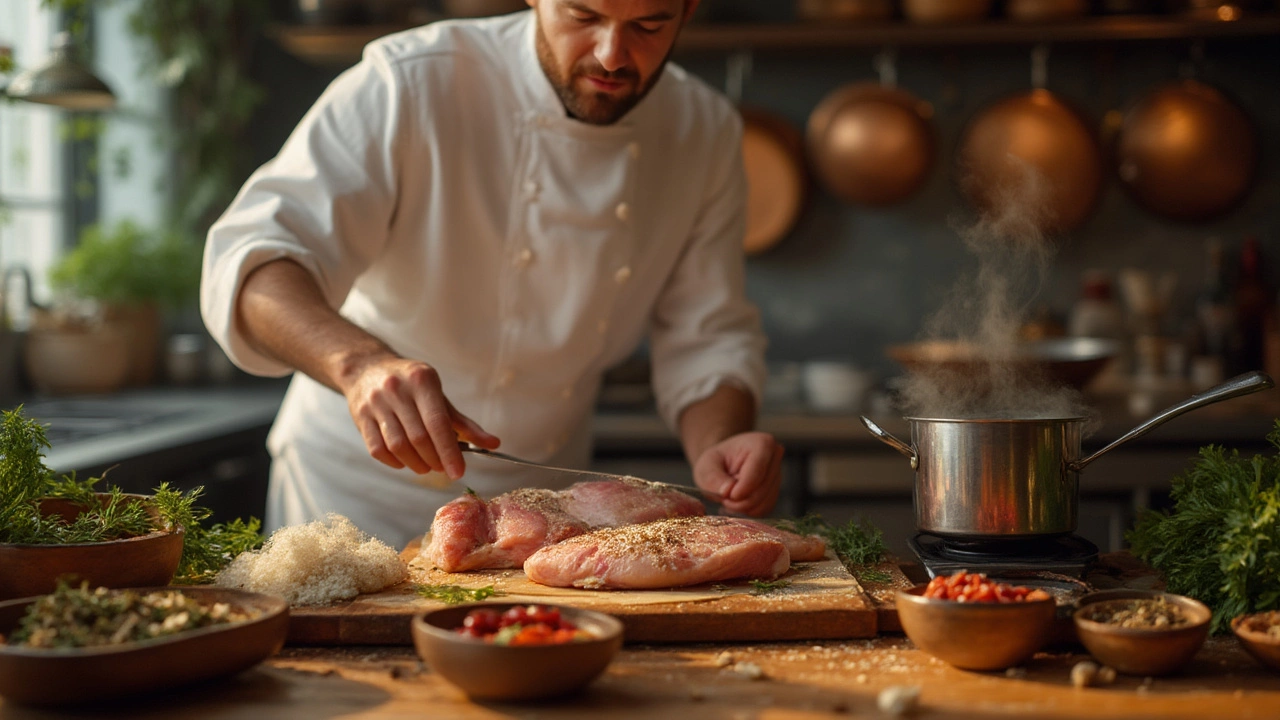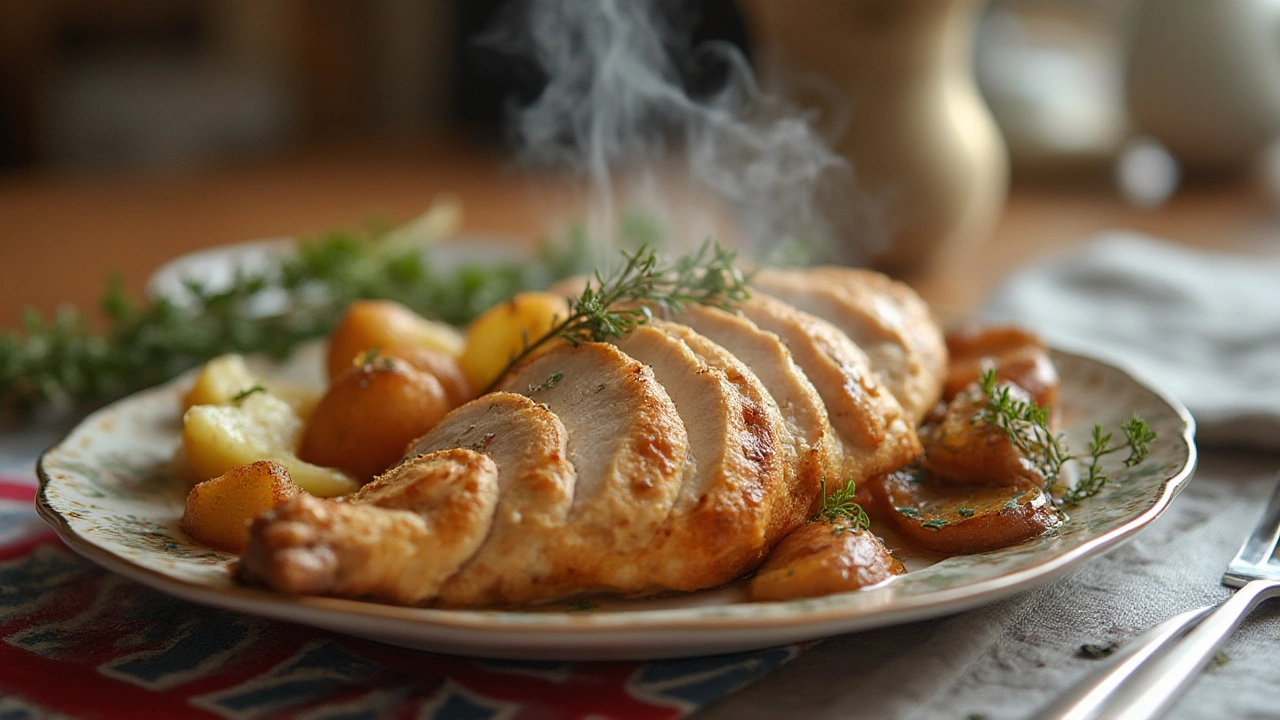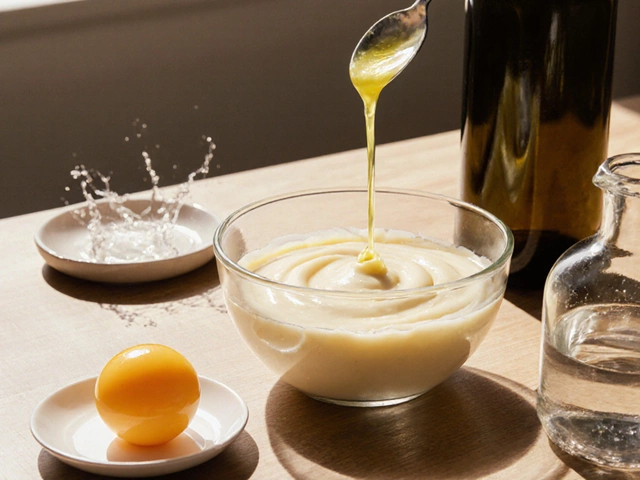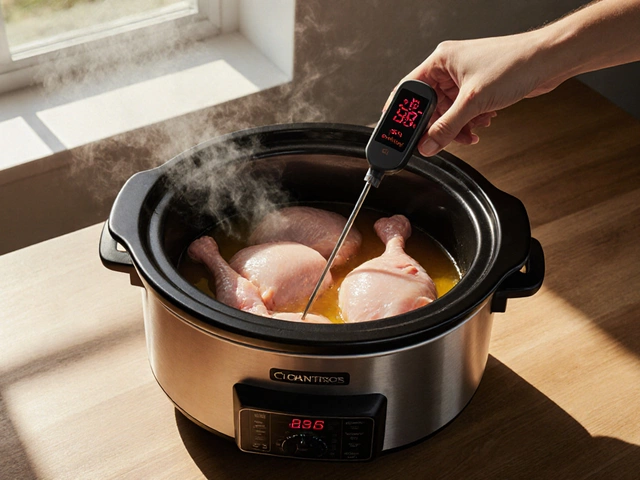
If you’ve ever sat down at a nice restaurant, cut into your chicken breast, and wondered why it’s outrageously tender compared to what you make at home—trust me, you’re not alone. There’s something almost magical about the way restaurants nail that juicy melt-in-your-mouth bite every single time, even if you order grilled, baked, or pan-seared. Meanwhile, home cooks everywhere seem doomed to fight with chewy, stringy meat. There’s no mystical chef gene. Just a ruthless devotion to technique, tricks, and sometimes a few not-so-obvious ingredients. If you’re tired of rubbery chicken, let’s strip back the curtain.
The Science and Craft of Tender Chicken Breast
First off, let’s get this out of the way: chicken breast is naturally a lean, low-fat cut, which means it’s easy to mess up. It goes from juicy to dry in a blink. Restaurants, though, have figured out how to get science and craft on their side. For a start, most don’t just grab the meat straight from the fridge, slap it on the grill, and hope for the best. There's a whole process before the chicken even hits the heat.
One of the big secrets? Brining. This isn’t just for holiday turkeys. Plenty of restaurants submerge chicken breasts in simple brines—water mixed with salt and sometimes sugar. This isn’t some old-wives’ tale, either. Salting helps the proteins break down a bit, allowing the chicken to retain more moisture during cooking. Tests done by the food science crew at America’s Test Kitchen showed a 10% to 15% difference in moisture for brined versus unbrined breasts. That translates to not just a juicier bite, but also a much more forgiving cooking process.
The next key: pounding the chicken to an even thickness. Uneven chicken, with a big thick lump on one end and a skinny flap on the other, just doesn’t cook right. The thin part dries out while you wait for the thick end to catch up. Most pros use a simple mallet or even the bottom of a small pan. You’d be surprised how leveling the playing field leads to evenly cooked perfection. Even at some busy Wellington eateries, I’ve spotted this in the prep kitchen. It’s not about violence—it’s about ensuring every bite is the same.
Restaurants are also obsessed with temperature. They use instant-read thermometers and cook chicken just until it hits 74°C (165°F), not a second longer. Overcooking kills tenderness fast. Sous vide machines—those water bath gadgets—have become more common, even in mid-range spots. With sous vide, chefs hold chicken at a precise temp for longer, giving every bit of protein a ticket to juice-town. Won’t see this at home unless you’ve splurged on gear, but temp control is non-negotiable.
Lastly, a lot of kitchens will finish chicken in a flavorful fat—think butter, olive oil, or a mix. Ever heard of "basting"? The pan drippings get spooned over the chicken, bathing it in flavor and keeping the surface moist. It’s a small move that makes a massive difference.

Restaurant Tricks: Marination, Velveting, and More
Let’s get into a few less obvious moves. Have you noticed how even the budget spots or chain restaurants still have breast meat that’s so darn tender, it almost can’t be natural? That’s marination at work, and sometimes, something called velveting—a Chinese cooking technique you usually see in stir fries.
Marination is as old as cooking itself, but restaurant marinades do a lot more than add flavor. The acidic part—like lemon, vinegar, or yogurt—helps break down muscle fibers. Then, there are enzymatic marinades using pineapple or papaya, which literally soften the meat at a molecular level. Heck, in some high-turnover kitchens, you’ll even find a pinch of baking soda in the marinade. It raises the pH on the chicken’s surface, making it harder for the proteins to squeeze out water. It’s not about making the meat "taste like chemicals"—it’s about making sure it doesn’t taste dry.
Now, velveting is an old Chinese restaurant hack. Meat gets tossed with a little egg white, cornstarch, and sometimes rice wine, then pre-cooked in barely simmering water or oil for a quick minute. That cornstarch-glazed layer keeps juices inside, so the breast stays soft, even when stir-fried over high heat later. Some places in Wellington’s Courtenay Place are all about this. Give it a try at home—it works better than it sounds.
Chain restaurants go a bit high-tech. According to supplier data, a lot of mass-market chicken undergoes something called "enhancement." They inject a saltwater solution (sometimes with a touch of sugar and phosphates) into the meat. Not exactly glamorous, but it guarantees juicy, tender chicken over long holding times and high-volume cooking. If it feels like cheat codes, it kind of is—but it works.
Let’s look at a quick table breaking down the methods and their effects on tenderness:
| Technique | Main Effect | Common in Restaurants? |
|---|---|---|
| Brining | Greater moisture retention, prevents drying out | Yes |
| Marination (acidic or enzymatic) | Breaks down muscle, adds flavor | Yes |
| Velveting | Keeps moisture in during quick-cooking | Popular in Asian cuisines |
| Sous Vide | Precise temperature control, max juiciness | Mid to high-end spots |
| Mechanical Tenderizing | Physically breaks up tough parts | Common in chains or bulk prep |
| Saltwater Injection | Makes meat consistent, tender | Chain/franchise kitchens |
This is why no matter how many home recipes call for “just a quick sear and a bake,” you almost never hit the restaurant level result unless you work some of these tricks into your own process.

How To Nail Restaurant-Quality Chicken Breast at Home
Okay, here’s the part that actually changes your weeknight chicken routine. Take these steps and you won’t just keep up with restaurants—you might outdo them. No wild tools required.
- Tender chicken breast is all about start-to-finish planning. Give yourself at least 20-30 minutes ahead.
- Start with a simple brine. Mix four cups water with 1/4 cup salt (plus, if you want, a couple tablespoons sugar). Drop in the chicken, chill for 30 minutes. Rinse, pat dry. This alone is game-changing.
- If time’s tight, use a quick marinade with yogurt or buttermilk and your favorite herbs for 15-30 minutes. Don’t forget a squeeze of lemon or a splash of vinegar.
- Keep it even. Pop the chicken breast between two bits of baking paper and whack it with a rolling pin or small pan so it’s an even thickness—about 1.5-2cm works best.
- When it comes to cooking, go for a cast-iron or heavy pan for searing, or oven at 180°C (350°F) if you like to bake. Use that instant-read thermometer—74°C (165°F) is cooked, not a degree more. Leave it to rest off the heat for five minutes; it’ll finish gently and soak back in the juices.
- If you want to try velveting, stir up a mix of egg white and cornstarch in a bowl—about 1 egg white and 1 tablespoon cornstarch per two breasts. Coat, let it sit for 10 minutes, then poach in barely simmering water for 1-2 minutes before finishing with your stir fry.
- For an ultra-pro finish, try basting. When the chicken’s almost cooked, toss in a knob of butter or spoon over olive oil in the pan, basting as you go. It adds shine, flavor, and helps that last bit stay moist.
You don’t need restaurant resources to make it happen. Facts back it up—a University of Georgia study found brined chicken held about 15% more moisture after cooking, and a test by Cook’s Illustrated showed that pounding chicken lowered juice loss by a third. Even something as basic as resting your chicken can shift the texture completely, since those flavor-packed juices reabsorb instead of pooling all over your plate.
One overlooked tip: let your chicken warm up a bit on the bench before cooking (around 15-20 minutes). That way you don’t shock it with high heat from fridge-cold. Cooks in some top Wellington bistros swear by this for tender results, and it adds real punch to your outcome at home.
At the end of the day, the restaurant magic comes down to relentless attention to detail—tiny changes and “cheats” most home cooks gloss over. Swap one or two of these tricks into your cooking and you’ll see, taste, and feel the difference the next time you dig in. Your weeknight chicken dinner might just become the new favorite meal at home.





